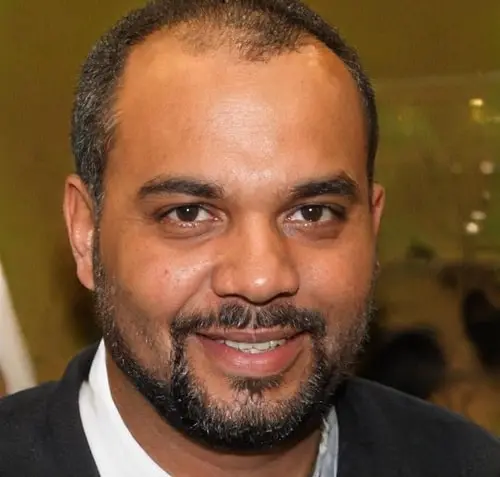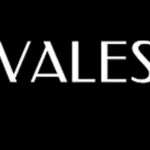Human Resource Management or HRM or just HR is a pretty common word that you have heard like a million times already, especially if you work in a company or in an organization. But when it comes to how HRM functions, there are actually two types in that department: one is Traditional HRM and the other one is Strategic HRM. By the looks of it, you might guess what these two actually mean but worry not, we are here to clear up your doubts about these two. And without dragging this introduction thing any further, let’s get to the actual stuff aka the differences, shall we?
Traditional HRM
Now, traditional HRM is something we shouldn’t even be explaining too much because it is pretty much the basic HR stuff. You see, under the traditional HRM, all things like hiring people, paying them alright, keeping them happy, making the most out of a team, and fixing any issues that pop up, fall under. As we told you already, this is like the basic level HR stuff that you’ll see seamlessly working or implemented in every workplace, no matter the city or the nation. But you might be wondering why is there a need for this kinda HRM, right? Do not limit your thinking here, you see, the main goal of implementing traditional HRM is to actually ensure that everything within a company or organization is happening according to the book or the rules. And it is in place to fix the issues when they arise, so yeah, no planning, no nothing.
Strategic HRM
Now, strategic HRM? That’s a whole new scene. It’s about linking HR directly with what the company wants to achieve, thinking ahead, and making smart moves. Here, people working in the company are seen as the main force driving success. Strategic HRM is about lining up everything HR does with the company’s goals, making sure the people side of things really helps the company stand out. It’s looking at the big picture, going beyond just hiring and managing benefits to coming up with HR plans that help the company do better, get the team involved, and create a work culture that supports the company’s aims, not for now, but for the long term, you know?

| Aspect | Traditional HRM | Strategic HRM |
|---|---|---|
| Focus | Short-term and operational tasks | Long-term organizational goals and strategy |
| Orientation | Administrative and reactive | Proactive and forward-thinking |
| Role of HR | Supportive and transactional | Integral and strategic partner |
| Planning | Limited strategic planning, often reactionary | Comprehensive strategic planning, proactive approach |
| Employee Relations | Reactive response to issues | Proactive fostering of positive employee relations |
| Talent Management | Traditional hiring and training methods | Emphasis on talent development and retention |
| Performance | Primarily focused on individual performance metrics | Emphasis on aligning performance with organizational goals |
| Decision Making | Limited involvement in organizational strategy | Active involvement in organizational decision-making |
| Goal Achievement | Short-term goals often take precedence | Balance between short-term and long-term goals |
| Measurement | Metrics mainly focus on cost and efficiency | Metrics focus on effectiveness and contribution to strategic objectives |
Key Differences Between Traditional and Strategic HRM
Alright, we have just covered the definition part of this whole HRM thing, and now’s the time for you to get to know about where and how these two actually differ from each other. Below, we have compared Traditional and Strategic HRM based on a few key points, so that it is much easier for you to understand the main differences, you know? Alright, here we go now.
1. Goals
Old-school HR aims to keep the engine running smooth and quiet, ticking off tasks, and making sure everything’s on the up and up with the law and budget. It’s the behind-the-scenes stuff, with success measured by how unseen yet efficient it is. But, Strategic HRM? It’s reaching for the stars, aiming to amp up the company vibe, get employees pumped, and make sure the company stays ahead of the curve. It’s about switching HR from being the silent support to a key player in the company’s mission.
2. How They Do Things
Traditional HR’s playing it by the rules, tackling stuff as it pops up without a master plan. It can get a bit messy, missing chances to link HR work with where the company wants to go. Meanwhile, Strategic HRM’s got the roadmap out, plotting the company’s course and making moves that match perfectly with the company’s future plans. It’s about being one step ahead, ensuring HR’s not just along for the ride but helping steer the ship, you know?
3. Looking Ahead
Traditional HR’s caught in the now, focusing on the immediate without much thought for the down-the-line. This means they’re often reacting instead of acting. But Strategic HRM? It’s got its eyes on the horizon, planning for the workforce the company will need and how to build it. It’s about prepping today for tomorrow’s win, that’s pretty much how it is when we put it in the simplest words.
4. HR’s Role
In the traditional setup, HR’s the rule enforcer, the paperwork king, not really mixing it up where the big decisions are made. But jump over to Strategic HRM, and HR’s in the mix, shaping the company’s strategy, molding the culture, and helping carve out that competitive edge. Here, HR’s not just backing up the strategy; it’s the one actually making the strategy.
5. What Counts as a Win
For traditional HR, it’s all about running a slick operation like fast hiring, staying within the law, and watching the budget. It’s looking at HR’s success through the lens of day-to-day operations. But switch gears to Strategic HRM, and it’s the big impact on the company’s performance that counts. Is the team engaged? Are we keeping and growing our talent? It’s a shift from just keeping things running to fueling the company’s success.
6. Making Decisions
Traditional HR might lean on gut feels or the tried-and-true methods. But Strategic HRM? It’s all in on the numbers game, using data to guide HR strategies, make informed decisions, and keep everything lined up with the company’s targets. It’s about swapping guesswork for game plans backed by real data, and that is what makes the most difference when it comes to growth, you know?
Conclusion
That’s pretty much it for today. Now, whenever you hear about traditional or strategic HRM in your workplace, you’ll know what impact it can have and what is about to go down, right? But most importantly, you’ll see these two actually when they are being implemented, you know?

Meet Suhas Harshe, a financial advisor committed to assisting people and businesses in confidently understanding and managing the complexities of the financial world. Suhas has shared his knowledge on various topics like business, investment strategies, optimizing taxes, and promoting financial well-being through articles in InvestmentDose.com


